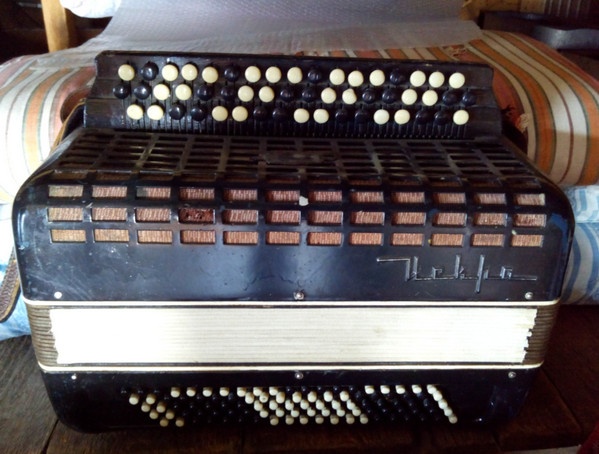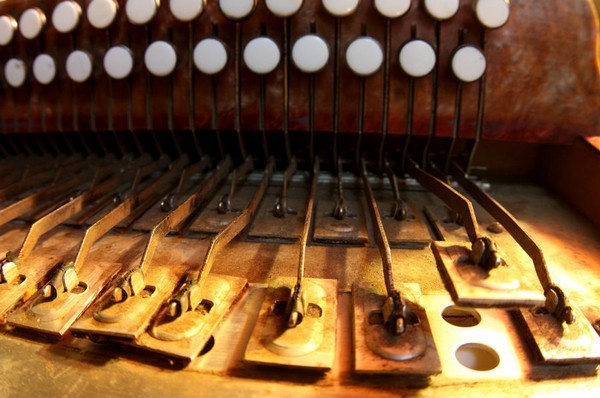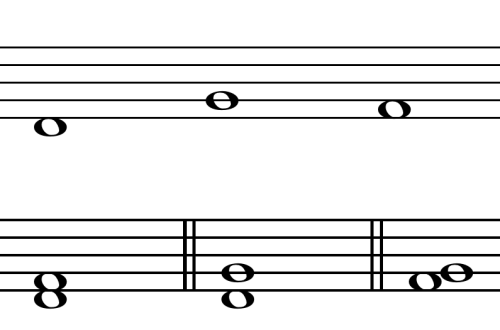
History of button accordion development
Contents
Bayan is basically a reed wind instrument, but at the same time it is also a keyboard musical instrument. It is relatively “young” and constantly evolving. From its creation to the present day, the button accordion has undergone a huge number of changes and improvements.
The principle of sound production, which is used in the instrument, has been known for more than three thousand years. A metal tongue oscillating in a stream of air was used in Chinese, Japanese and Lao musical instruments. In particular, this method of extracting musical sounds was used in the Chinese folk instrument – sheng.

The history of the button accordion began from the moment when for the first time a metal tongue that emits a sound was forced to vibrate from air directed not from the lungs of a musician, but from a special fur (about the same as used in blacksmithing). This principle of the birth of sound formed the basis of the device of a musical instrument.
Who invented the button accordion? Many talented masters took part in the creation of the button accordion in the form in which we know it. But at the origins were two masters working independently from each other: the German organ tuner Friedrich Buschmann and the Czech master František Kirchner.
Kirchner back in 1787 proposed the idea of creating a musical instrument, which was based on the principle of the oscillatory movement of a metal plate in a column of forced air using a special fur chamber. He also created the first prototypes.
Bushman, on the other hand, used the oscillating tongue as a tuning fork to tune the organs. He only blew out precise sounds with the help of his lungs, which was extremely inconvenient to use in work. To facilitate the tuning process, Bushman designed a mechanism that used a special bellows with a load.
When the mechanism was opened, the load rose up and then squeezed the fur chamber with its own weight, which allowed the compressed air to vibrate the metal tongue located in a special resonator box for quite a long time. Subsequently, Bushman added additional voices to his design, which were called alternately. He used this mechanism only for the purpose of tuning the organ.

In 1829, the Viennese organ maker Cyril Demian adopted the idea of creating a musical instrument with reeds and a fur chamber. He created a musical instrument based on the Bushman mechanism, which consisted of two independent keyboards and fur between them. On the seven keys of the right keyboard, you could play a melody, and on the keys of the left – bass. Demian named his instrument the accordion, filed a patent for the invention, and in the same year began to mass-produce and sell them.
The first accordions in Russia
Around the same time, a similar instrument appeared in Russia. In the summer of 1830, Ivan Sizov, a master of weapons in the Tula province, acquired an outlandish instrument at the fair – an accordion. Upon returning home, he took it apart and saw that the construction of the harmonica was very simple. Then he designed a similar instrument himself and called it an accordion.
Just like Demian, Ivan Sizov did not limit himself to making a single copy of the instrument, and literally a few years later a factory production of an accordion was launched in Tula. Moreover, the creation and improvement of the instrument has acquired a truly popular character. Tula has always been famous for its craftsmen, and the Tula accordion is still considered a standard of quality today.
“Well, where is the button accordion?” – you ask. The first accordions are the direct predecessors of the button accordion. The main feature of the accordion is that it is tuned diatonically and can only play in one major or minor key. This is quite enough for organizing folk festivals, weddings and other entertainment.
During the second half of the XNUMXth century, the accordion remained a truly folk instrument. Since it is not yet too complex in structure, along with the factory samples of the accordion, individual craftsmen also made it.
In September 1907, the St. Petersburg master Pyotr Sterligov designed an accordion that had a full-fledged chromatic scale. Sterligov called his accordion an accordion, honoring Boyan, the legendary singer-songwriter of ancient Russia.
It was from 1907 that the history of the development of the modern button accordion began in Russia. This instrument becomes so versatile that it allows the performing musician to play on it both folk melodies and their arrangements, as well as accordion arrangements of classical works.
Currently, professional composers write original compositions for bayan, and accordion players are not inferior to musicians of other specialties in terms of the level of technical proficiency in the instrument. In just a hundred years, an original school of playing the instrument was formed.
All this time, the button accordion, like the accordion, is still loved by the people: a rare wedding or other celebration, especially in rural areas, does without this instrument. Therefore, the button accordion deservedly received the title of Russian folk instrument.
One of the most famous works for accordion is “Ferapontov Monastery” by Vl. Zolotarev. We invite you to listen to it performed by Sergei Naiko. This music is serious, but very soulful.
The author is Dmitry Bayanov





